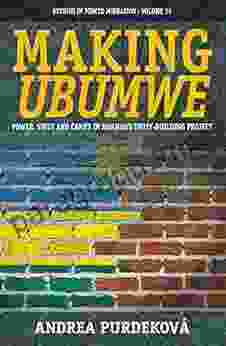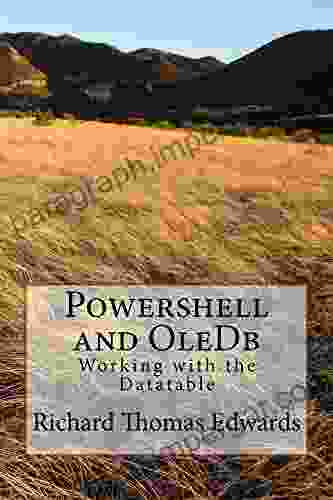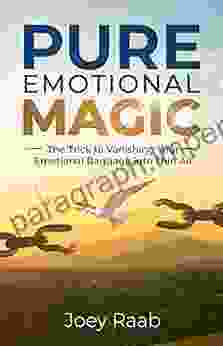Power, State, and Camps in Rwanda: Unity and Building Projects of Forced Migration

In the aftermath of the 1994 genocide in Rwanda, the government embarked on a massive Unity and Building project that involved the forced migration of over 1 million people. The project was justified as a necessary step to promote reconciliation and national unity, but it has been the subject of much debate and controversy.
5 out of 5
| Language | : | English |
| File size | : | 2871 KB |
| Text-to-Speech | : | Enabled |
| Screen Reader | : | Supported |
| Enhanced typesetting | : | Enabled |
| Print length | : | 486 pages |
This article explores the complex relationship between power, the state, and camps in Rwanda, focusing on the Unity and Building project. The article draws on extensive research, including interviews with camp residents, government officials, and aid workers, to provide a nuanced understanding of the project's impact on the lives of Rwandans.
The article begins by examining the historical context of the Unity and Building project. The project was launched in 1996, two years after the genocide, at a time when the country was still struggling to come to terms with the atrocities that had been committed.
The government argued that the project was necessary to promote reconciliation and national unity. The project involved the forced relocation of over 1 million people from their homes to new villages that were built by the government.
The article then explores the ways in which power relations are shaped and contested within camps. The article draws on the work of Michel Foucault to argue that camps are spaces of exception, where the normal rules of society do not apply.
The article argues that the Unity and Building project created a space in which the government could exercise its power in a particularly coercive and arbitrary manner. The project involved the use of violence, intimidation, and coercion to force people to move to the new villages.
The article also explores the ways in which the state's use of forced migration can be both a tool of control and a means of social transformation. The article argues that the Unity and Building project was both a way to control the population and a way to promote social and economic development.
The article concludes by reflecting on the broader implications of the Unity and Building project for understanding the role of camps in contemporary societies. The article argues that camps are not simply places of detention, but rather complex spaces where power relations are shaped and contested, and where social transformation can take place.
The article makes a significant contribution to the literature on camps and forced migration. The article provides a nuanced understanding of the complex relationship between power, the state, and camps in Rwanda, and it offers a new perspective on the role of camps in contemporary societies.
5 out of 5
| Language | : | English |
| File size | : | 2871 KB |
| Text-to-Speech | : | Enabled |
| Screen Reader | : | Supported |
| Enhanced typesetting | : | Enabled |
| Print length | : | 486 pages |
Do you want to contribute by writing guest posts on this blog?
Please contact us and send us a resume of previous articles that you have written.
 Book
Book Novel
Novel Page
Page Chapter
Chapter Text
Text Story
Story Genre
Genre Reader
Reader Library
Library Paperback
Paperback E-book
E-book Magazine
Magazine Newspaper
Newspaper Paragraph
Paragraph Sentence
Sentence Bookmark
Bookmark Shelf
Shelf Glossary
Glossary Bibliography
Bibliography Foreword
Foreword Preface
Preface Synopsis
Synopsis Annotation
Annotation Footnote
Footnote Manuscript
Manuscript Scroll
Scroll Codex
Codex Tome
Tome Bestseller
Bestseller Classics
Classics Library card
Library card Narrative
Narrative Biography
Biography Autobiography
Autobiography Memoir
Memoir Reference
Reference Encyclopedia
Encyclopedia Joe J Hanan
Joe J Hanan Jeffrey S Lubbers
Jeffrey S Lubbers Jessica J Mudry
Jessica J Mudry John Andraos
John Andraos John A Keel
John A Keel John A Mccormick
John A Mccormick Jo Bradford
Jo Bradford Joe Gioia
Joe Gioia Jen Karetnick
Jen Karetnick Jenifer Jordan
Jenifer Jordan John B Watson
John B Watson Jeffrey M Jentzen
Jeffrey M Jentzen Jennifer Connor
Jennifer Connor Jim Richards
Jim Richards Jemima Flendt
Jemima Flendt Jeremy Butterfield
Jeremy Butterfield Jerry A Dorsch
Jerry A Dorsch Jennifer Bohnet
Jennifer Bohnet Jerry B Marion
Jerry B Marion Jody Beck
Jody Beck
Light bulbAdvertise smarter! Our strategic ad space ensures maximum exposure. Reserve your spot today!
 Grant HayesFollow ·7.3k
Grant HayesFollow ·7.3k Walter SimmonsFollow ·16.3k
Walter SimmonsFollow ·16.3k Gabriel Garcia MarquezFollow ·2.4k
Gabriel Garcia MarquezFollow ·2.4k Fabian MitchellFollow ·15.6k
Fabian MitchellFollow ·15.6k Douglas FosterFollow ·6.3k
Douglas FosterFollow ·6.3k Julian PowellFollow ·6.7k
Julian PowellFollow ·6.7k Lord ByronFollow ·18.4k
Lord ByronFollow ·18.4k Gustavo CoxFollow ·14k
Gustavo CoxFollow ·14k

 Christian Barnes
Christian BarnesUnleash Your Creativity: Build Interlocking 3D Animal and...
Discover the Art of Paper...

 Terry Bell
Terry BellUnveiling the Secrets of Winning: A Comprehensive Guide...
In the realm of chance and fortune, the...
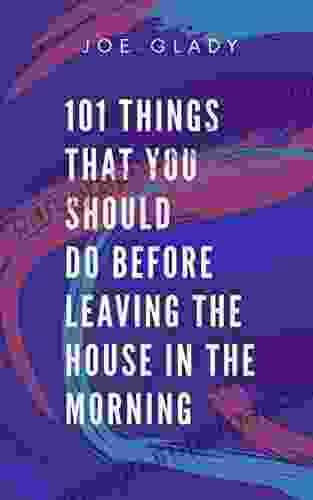
 Albert Camus
Albert Camus101 Things That You Should Do Before Leaving The House In...
Starting your day right is...
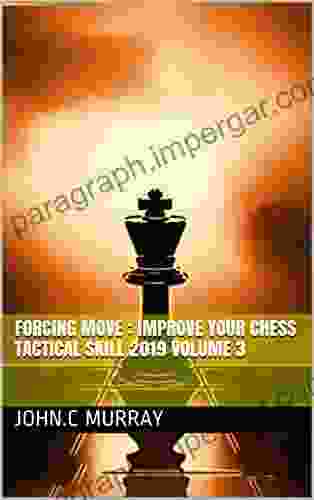
 Anthony Burgess
Anthony BurgessForcing Move 2024 Volume: Unleash Your Inner Grandmaster
Embark on an extraordinary chess...
5 out of 5
| Language | : | English |
| File size | : | 2871 KB |
| Text-to-Speech | : | Enabled |
| Screen Reader | : | Supported |
| Enhanced typesetting | : | Enabled |
| Print length | : | 486 pages |


